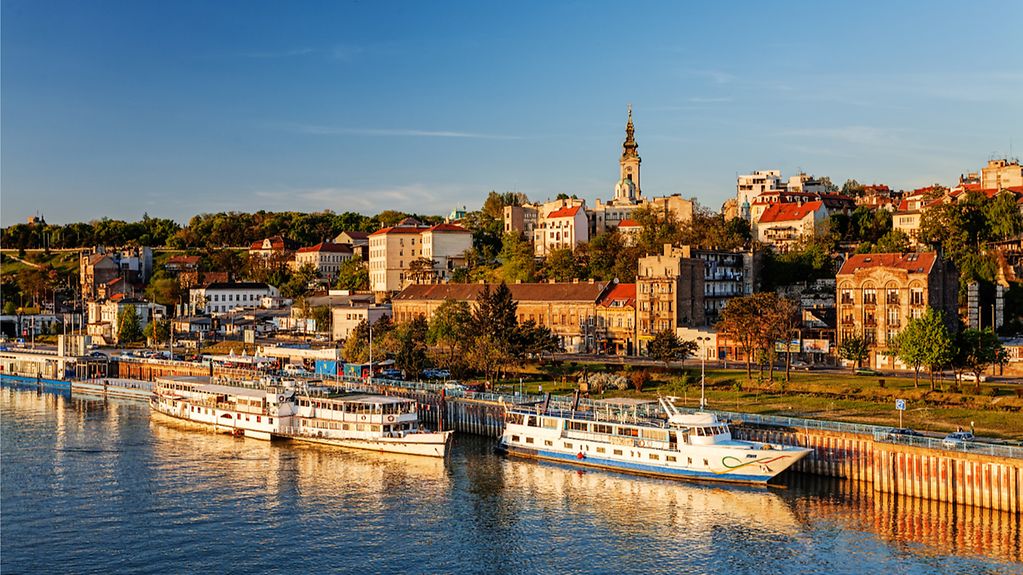Six facts about the relationship
The EU-Western Balkans Summit takes place on 6 October, when the leaders of EU member states and Western Balkan states will meet in Brdo in Slovenia. What are the links between the European Union and these six countries in South Eastern Europe? Here are six interesting facts about the relationship.
2 min reading time

The Serbian capital Belgrade: the six Western Balkans states are moving politically towards joining the European Union.
Photo: vladimirnenezic/stock.adobe.com
1. The economies of the European Union and the Western Balkan states are closely interlinked. The EU accounts for the majority of import and export trade from the Western Balkans: Western Balkans states import almost 70 percent of their goods from the EU. At the same time, over 80 percent of their exports go to the EU. This means the EU is the most important trading partner in the region.
2. The six Western Balkans states are moving politically towards joining the European Union. Two examples of this are Montenegro and Serbia, which have been involved in accession talks with the EU since 2012 and 2014 respectively. Last year, the EU also approved the commencement of accession negotiations with Albania and North Macedonia. Kosovo and Bosnia and Herzegovina could also apply to join the EU.
However, the EU-Western Balkans Summit should not be confused with the Western Balkans Summits. Also known as the “Berlin Process”, the first Western Balkans Summit was held in 2014 at the instigation of Federal Chancellor Angela Merkel. The summits aim to promote peace, security and stability in Western Balkans states and to support development in the region. The Federal Government considers that enhancing relations among the people of the region and bringing about rapprochement with the European Union remain pivotal factors.
3. The EU gives aid to the Western Balkans in times of crisis. Last year, for example, the EU provided Western Balkans states with an aid package worth around 3.3 billion euros to help them cope with the coronavirus pandemic and its consequences. The EU also delivered 651,000 doses of vaccines to the six countries between May and August.
4. The exchange programme for young people is thriving. Thanks to the Erasmus+ programme, the EU helped almost 30,000 young people from the Western Balkans come to the EU to work and study between 2015 and 2020, with over 18,000 making the journey in the opposite direction.
5. Transport links join the EU and the Western Balkans. Between 2014 and 2017, the EU invested 333 million euros in transport projects in Western Balkans countries. A total of 934 million euros of private investment was raised. Additional funding will now flow into the transport networks through the economic and investment plan.
6. The EU is also providing financial support for reforms in Western Balkans states. Last year’s economic and investment plan provides a comprehensive investment package worth nine billion euros. Its aims include increasing competitiveness, inclusive growth and environmental and digital transformations. The plan also provides guarantees to help attract public and private investment, which could mobilise up to 20 billion euros.